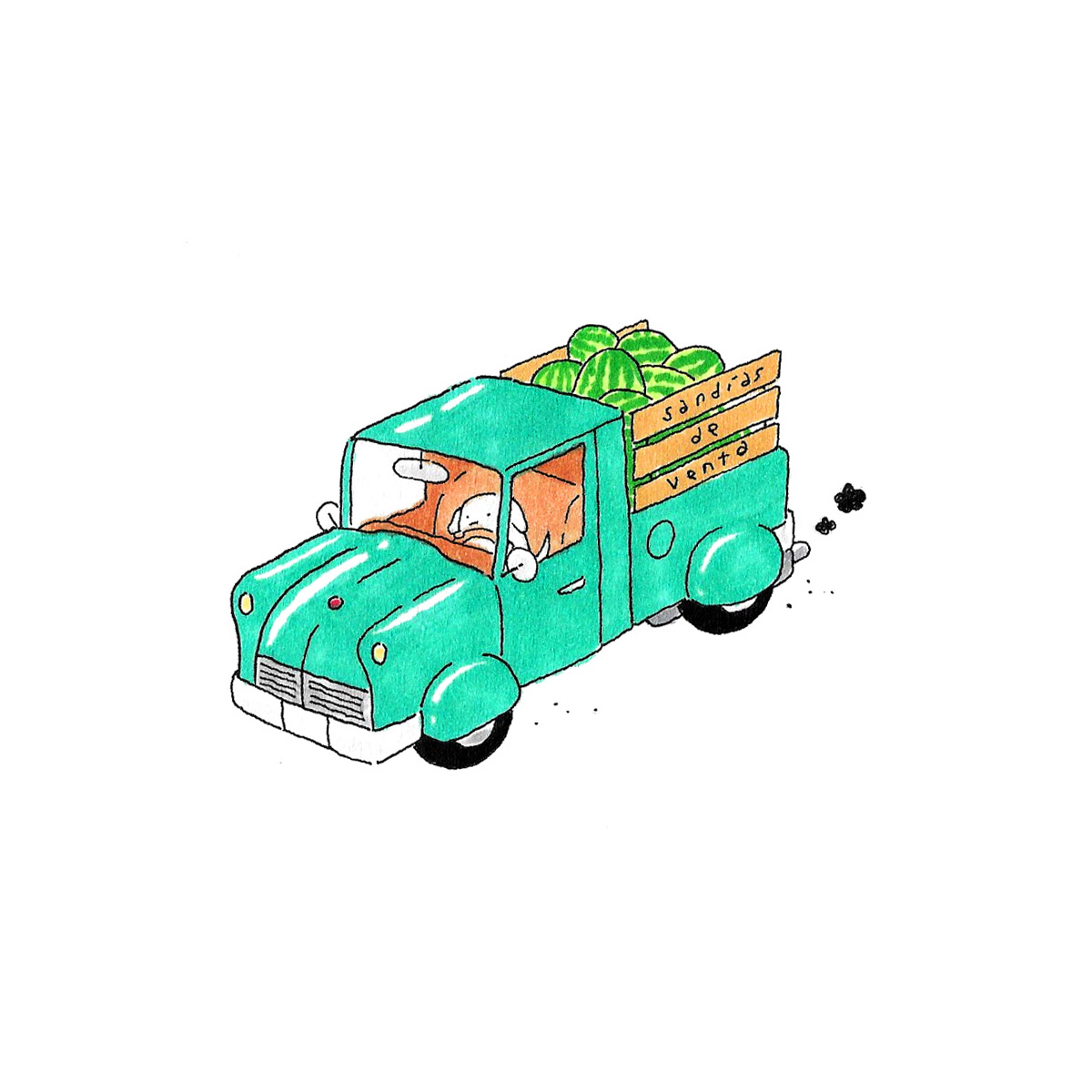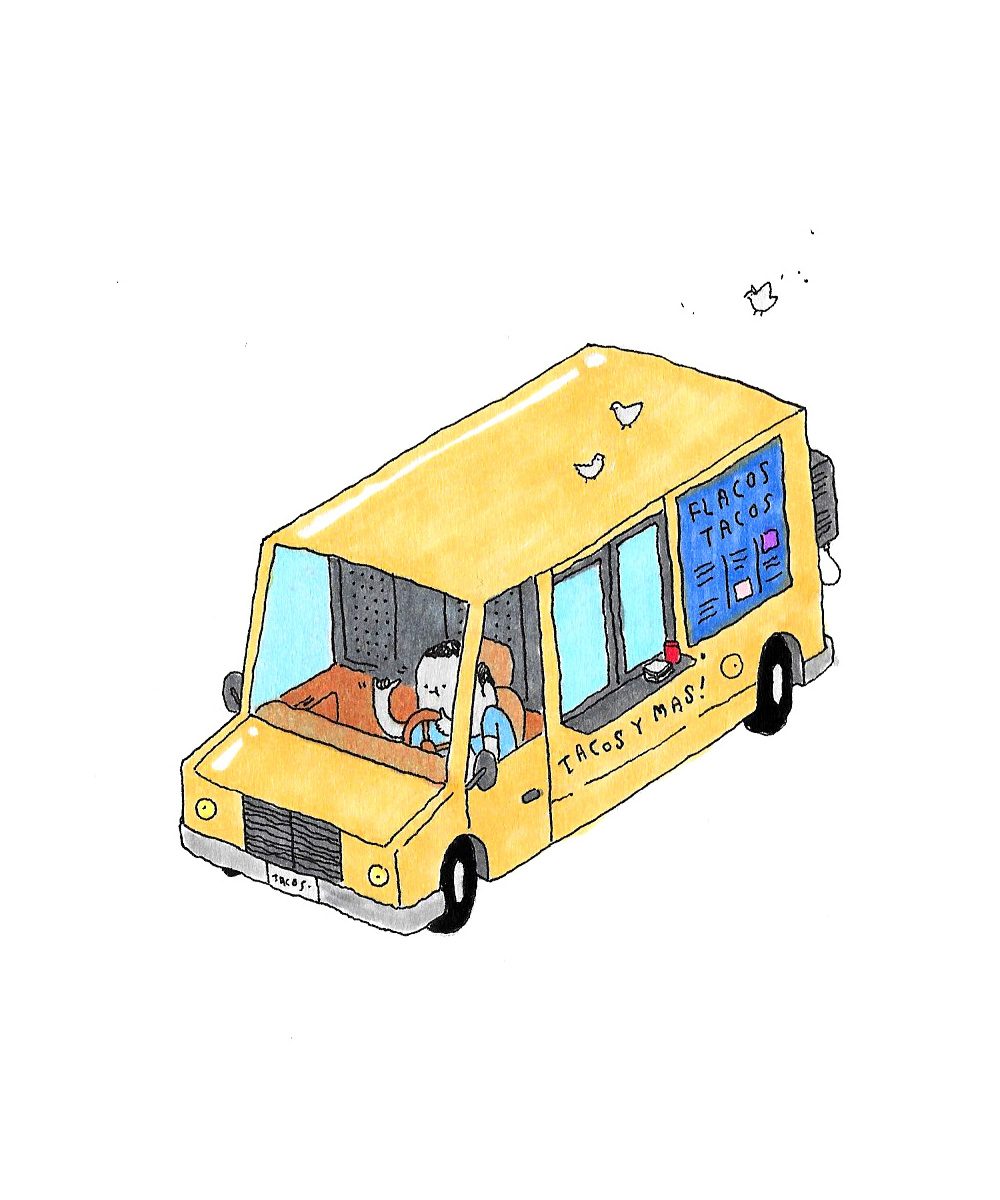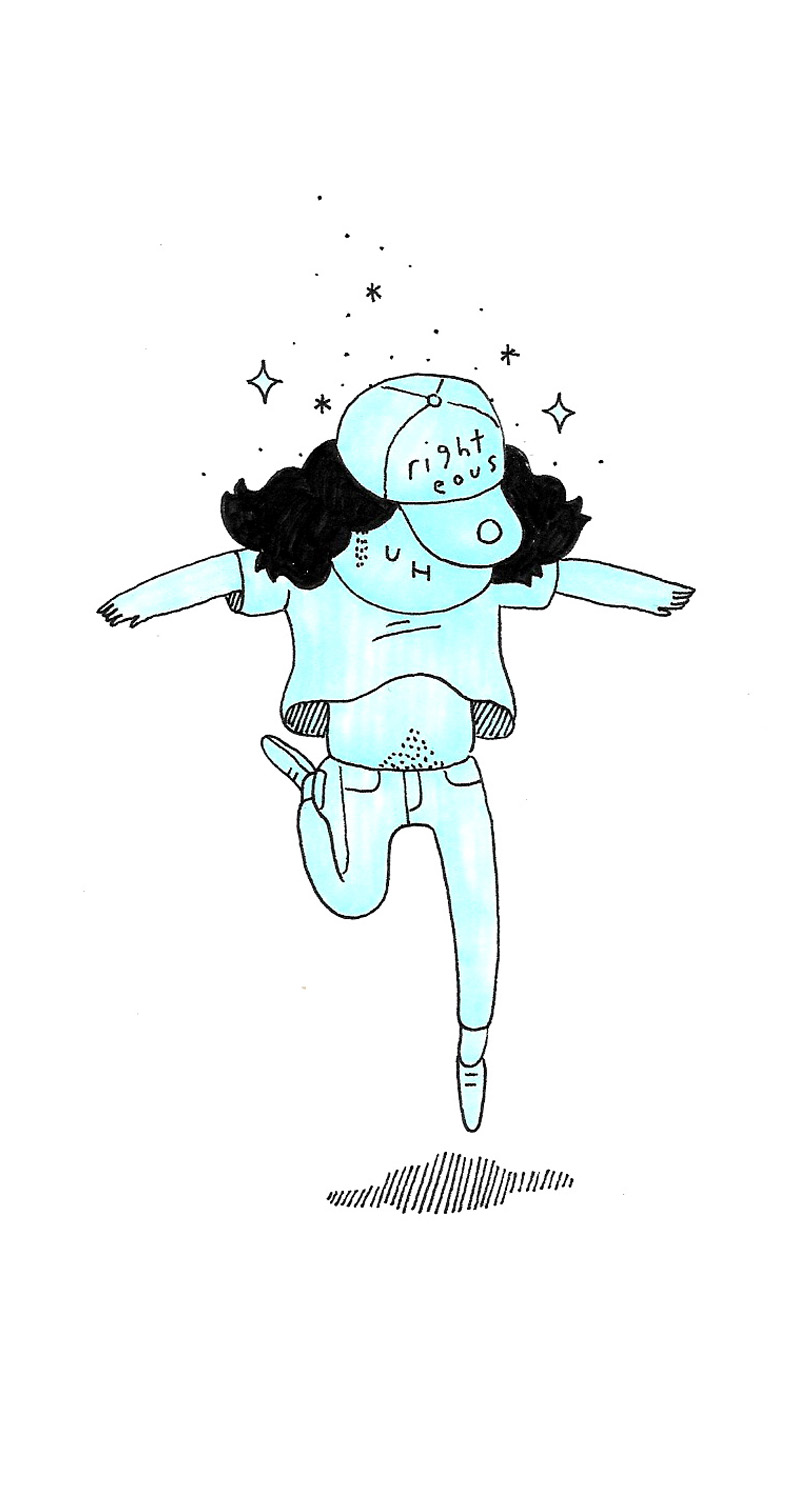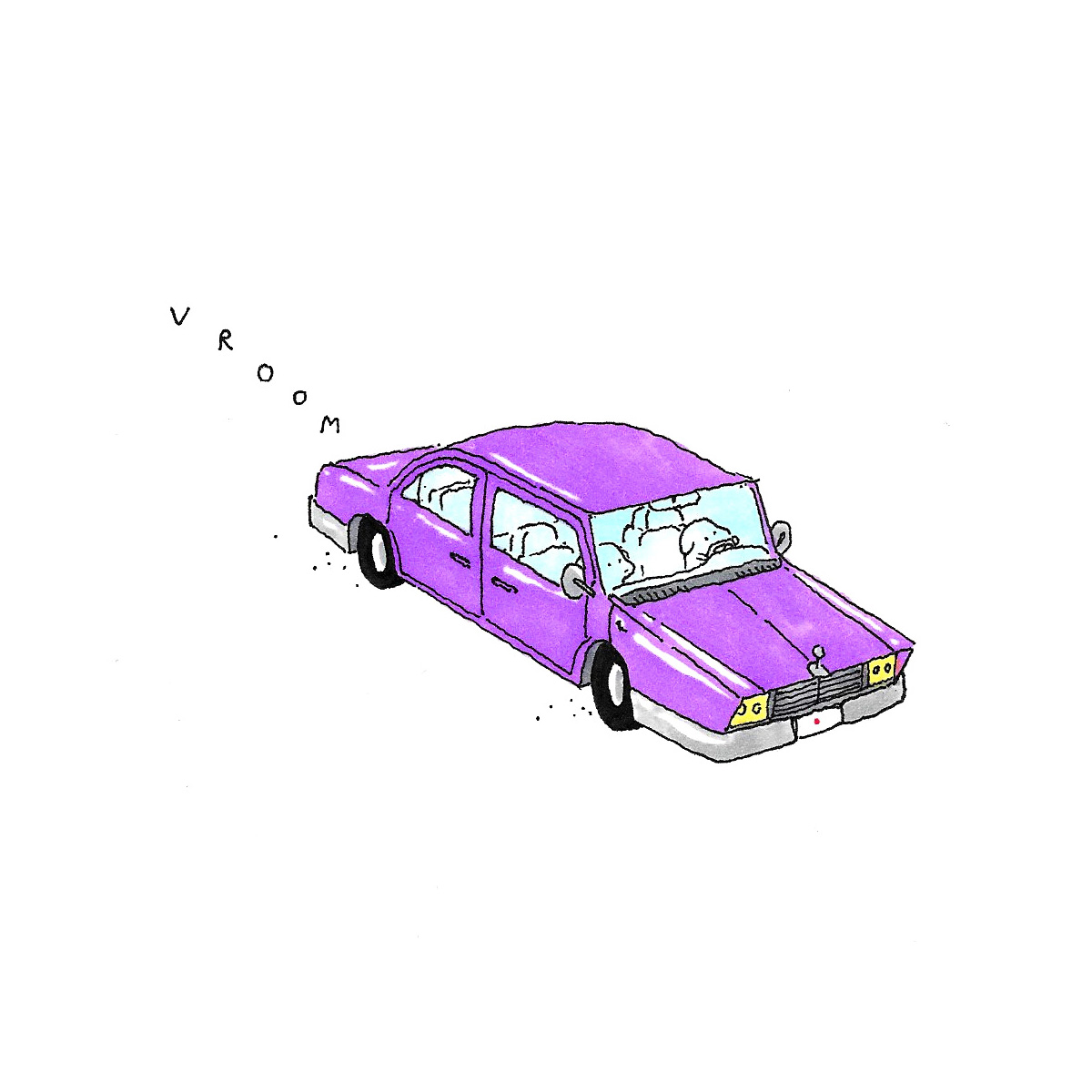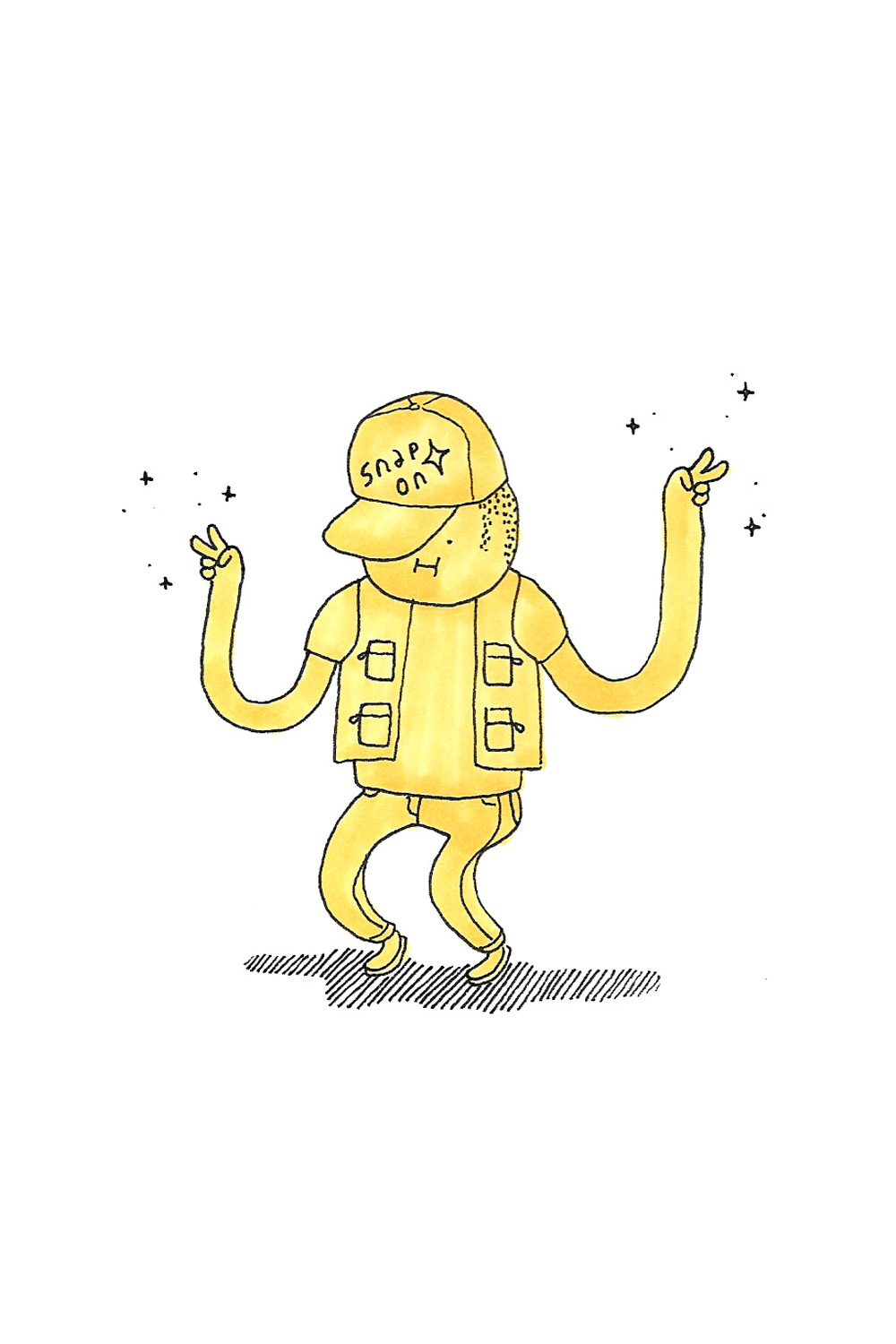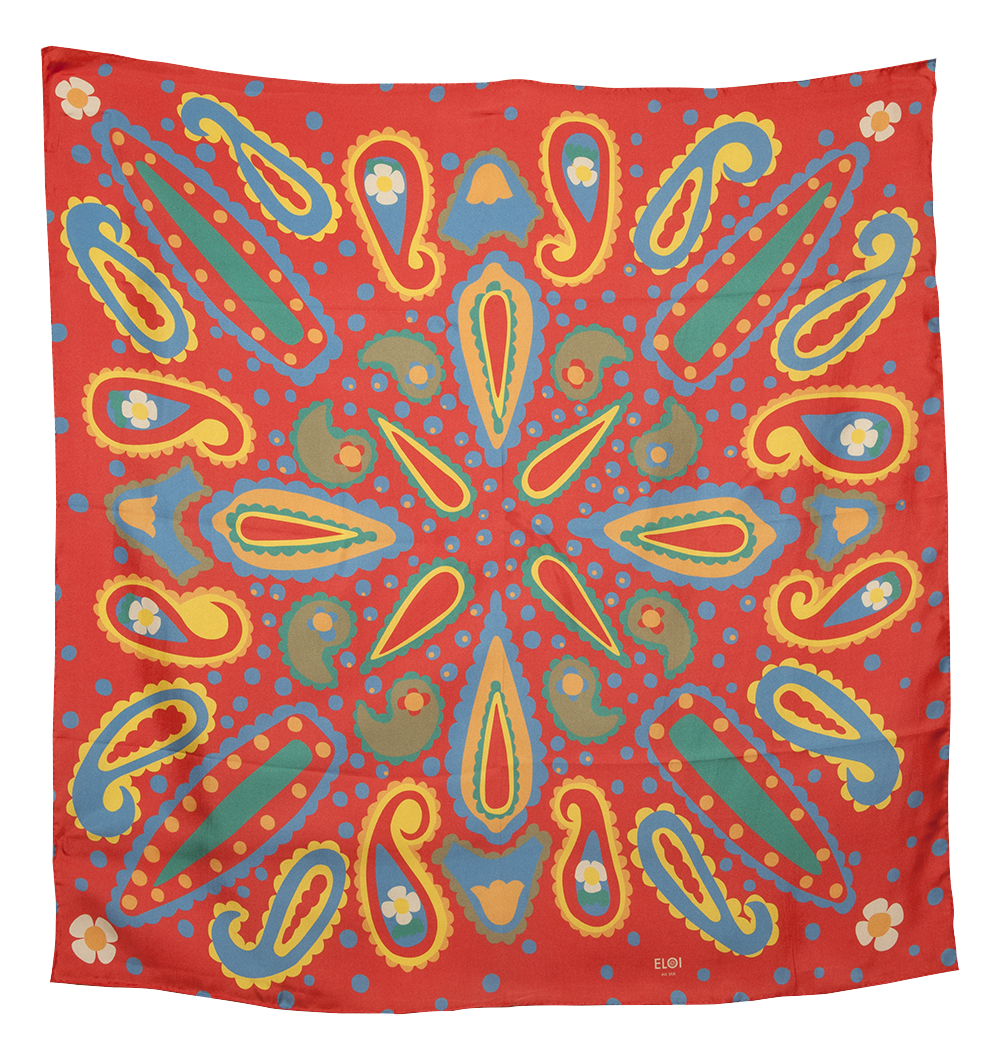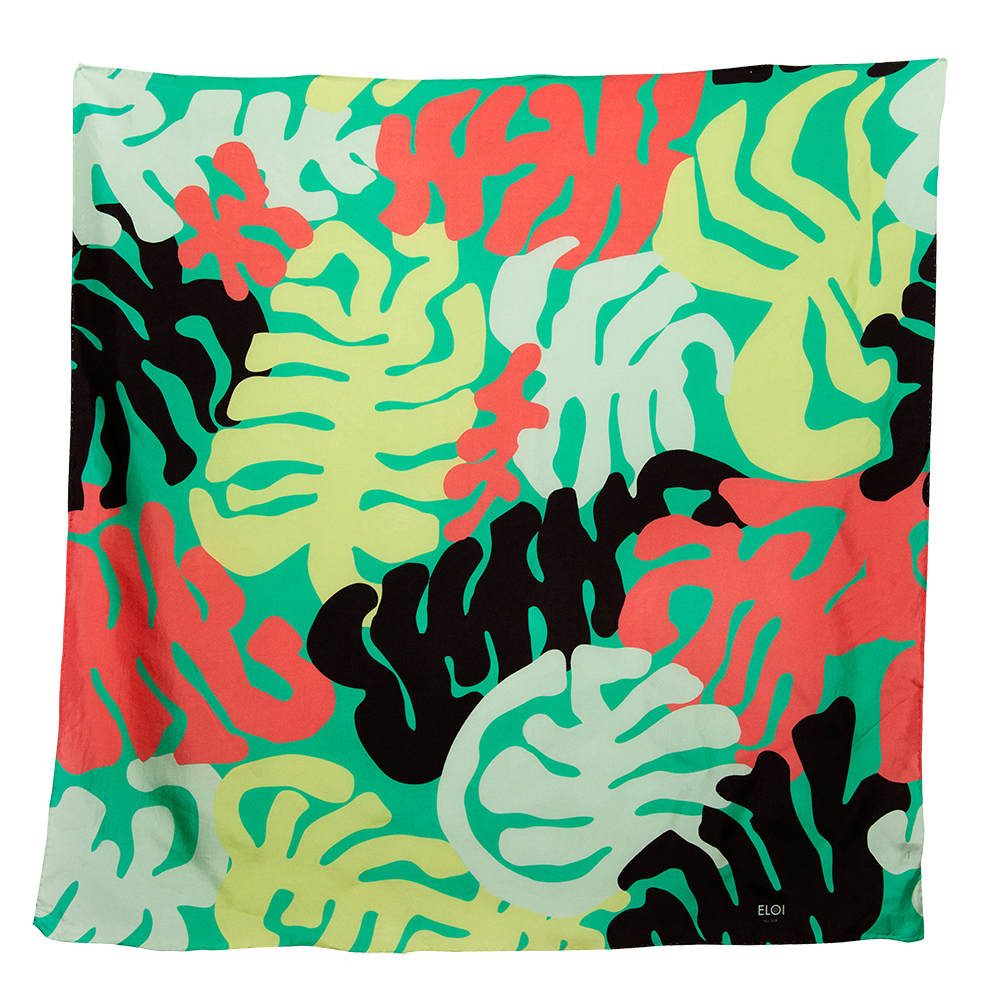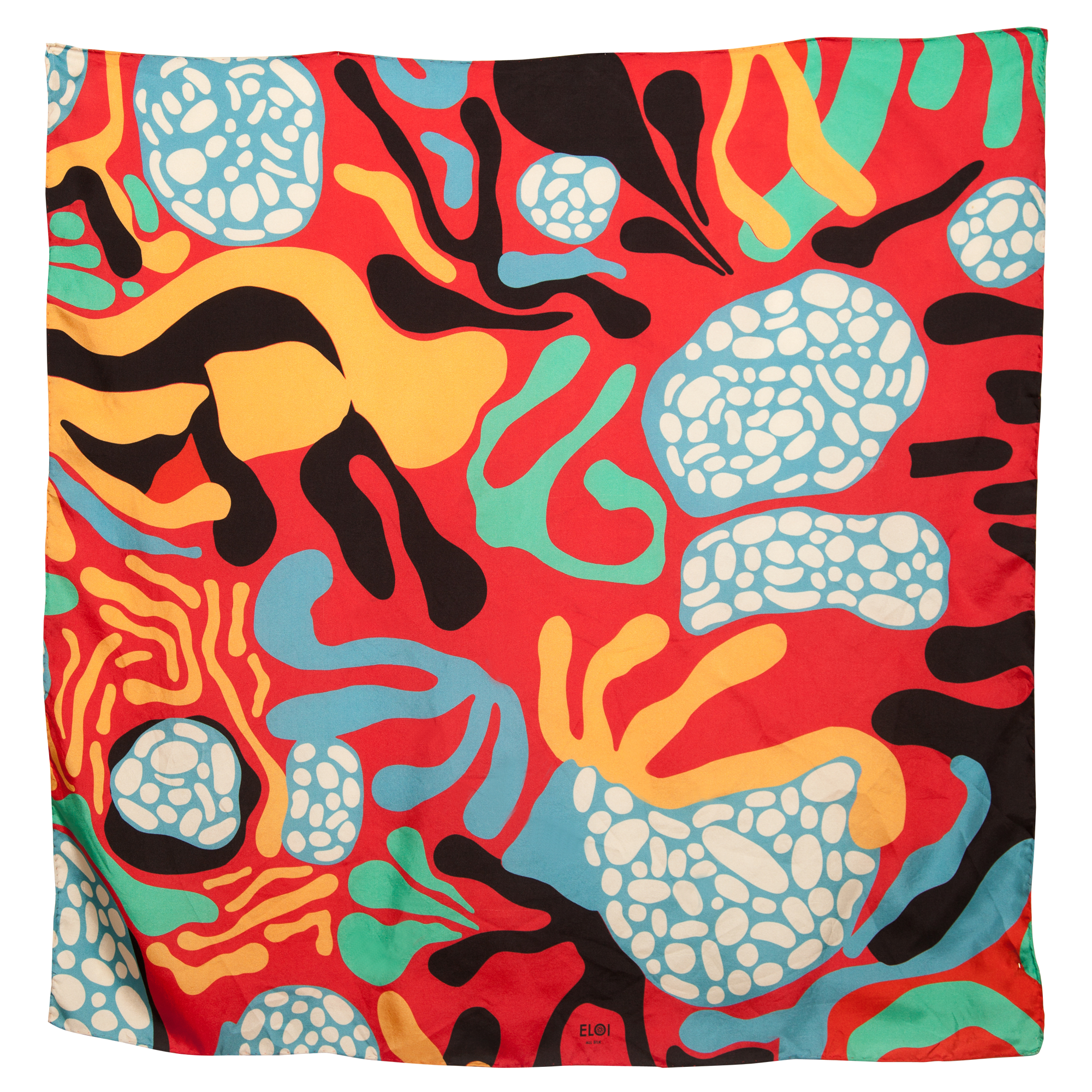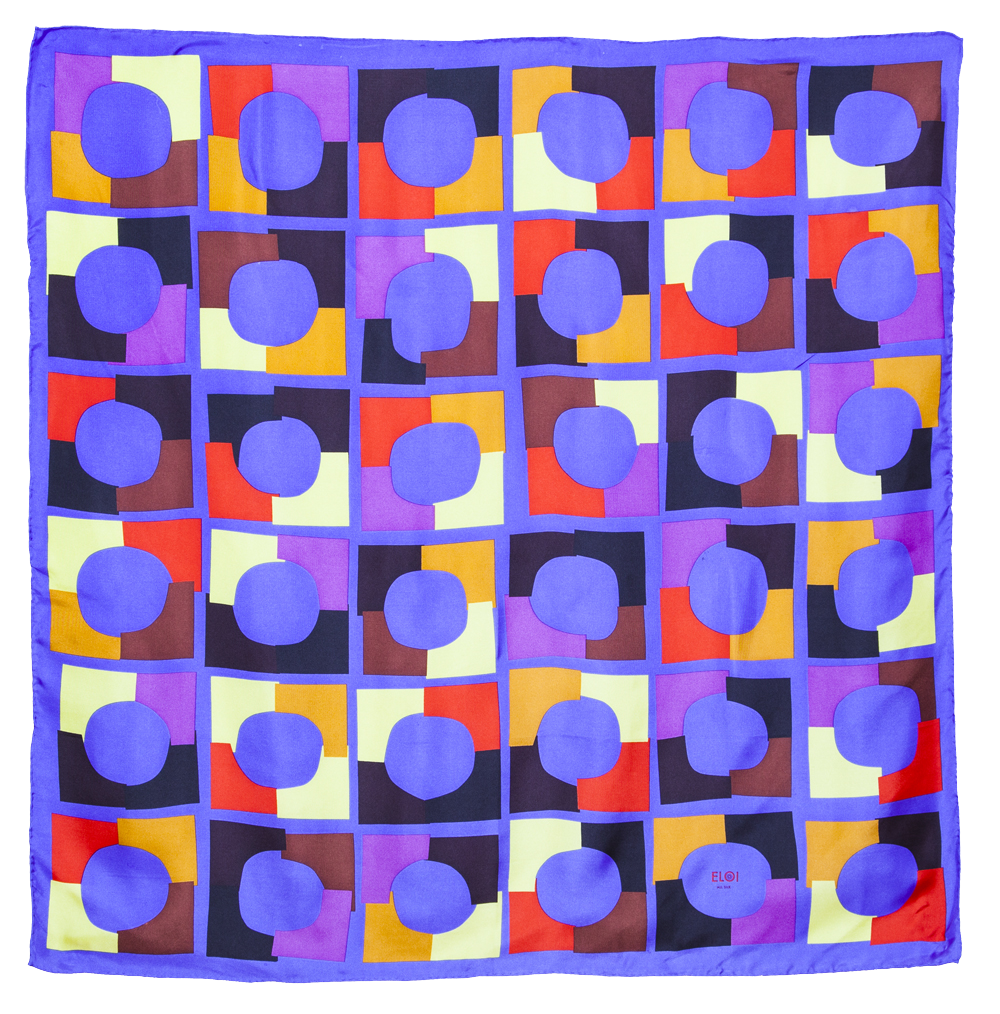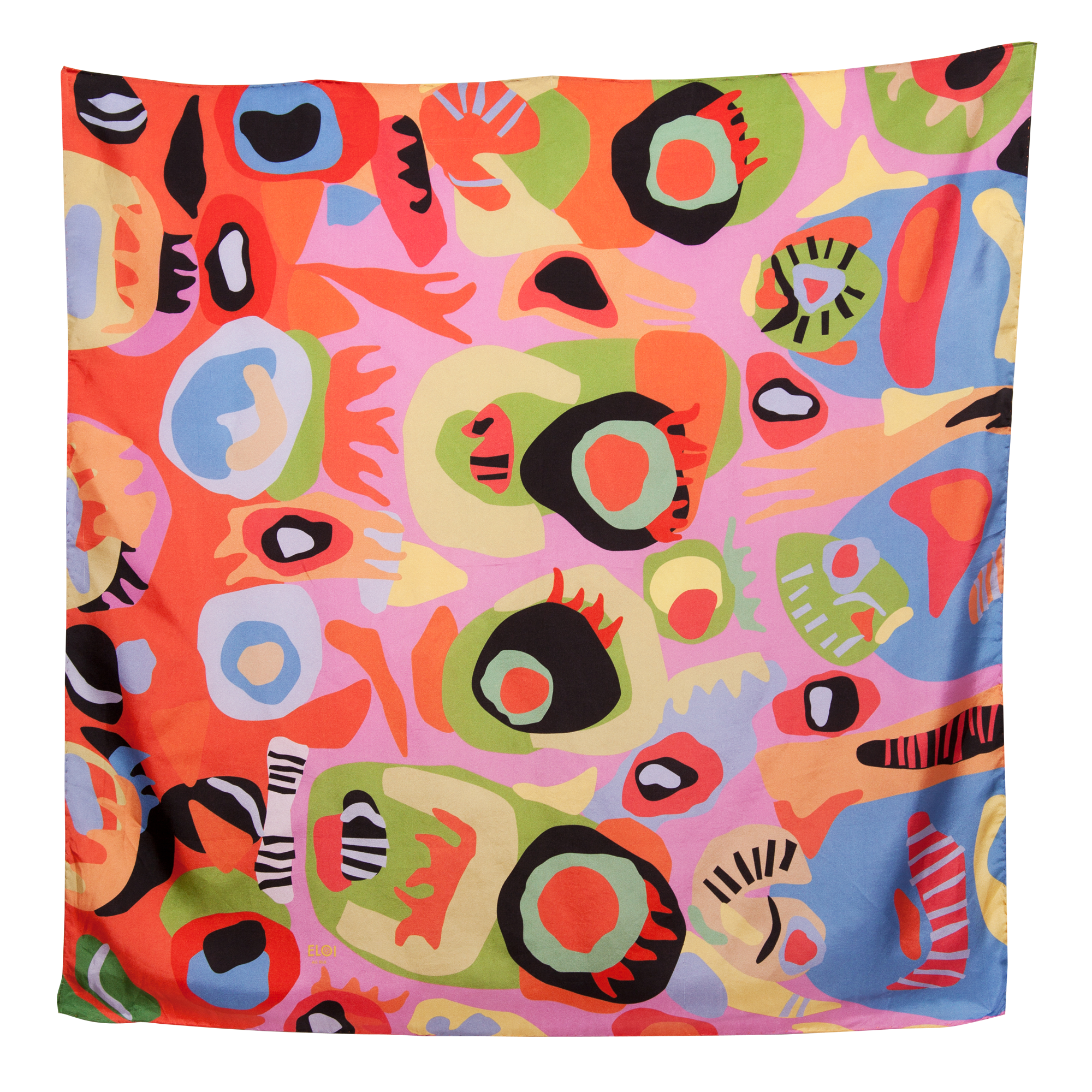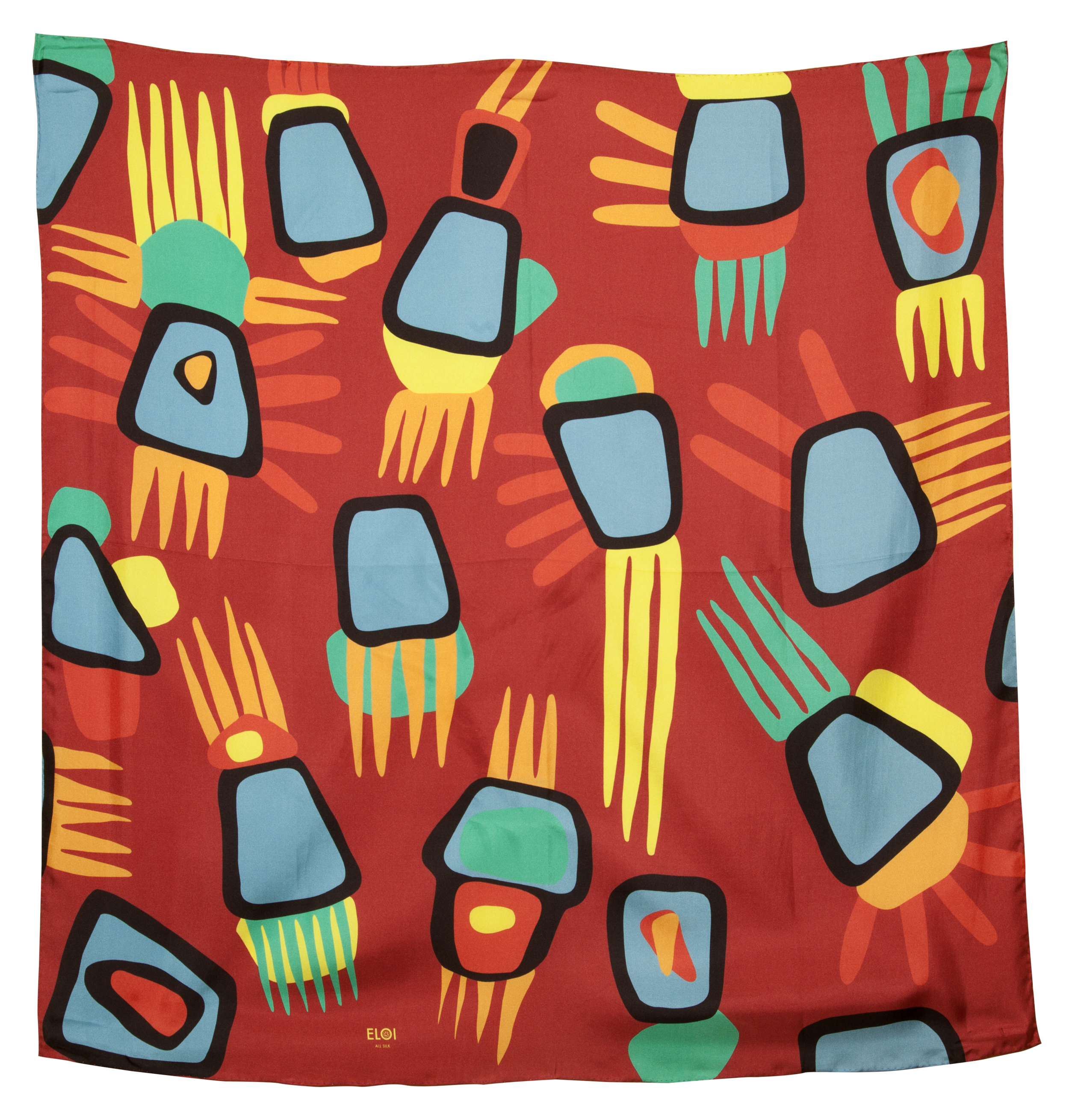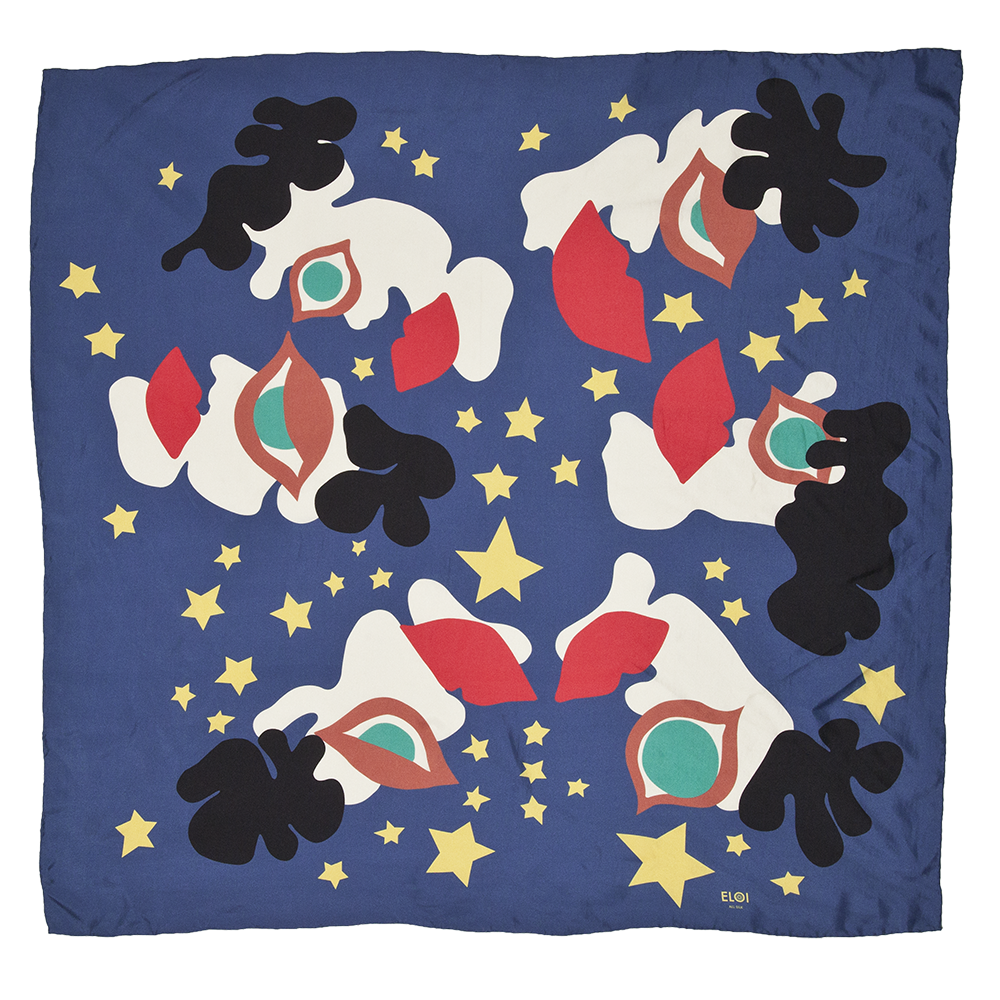Blood and White Series, 2014. From left to right, top to bottom: White Window, Sacred Egg, Heart, Brain, Panic Cloud, White Specter. BLUEOrange Gallery, Houston.
The Color Blue
BY: SOMMER BRUGAL
Being an artist is like having a brain parasite," says Caitlin McCollom. It’s channeling something bigger than yourself, trying to get closer to what is speaking to you. Embracing that brain parasite allows your artwork to speak to you—to speak through you—and influence your work in a way you might not have expected. It’s a beautiful process, and one that Caitlin embodies with ease and grace. It's a process she described to me while discussing her recent collection, Interior Mortification. Sitting in her studio, she explained the dynamic between an artist and his or her work, between one’s spiritual and physical self. As our conversation continued, the relationship between her works, her self-image as an artist, and her spirituality, became more apparent.
A Space Unknown
In her first series, Caitlin used only white to represent the concept of existentialism, a concept she never fully understood. Depicted by the most sacred of colors, it is the space surrounding one’s body. With a minimalistic approach, Caitlin questioned the relationship between reality and idealism, of absence and presence.
“I’ve always been interested in the idea of existential terror,” Caitlin said, “and I always felt that this uncertainty and unknowing—my obsession with it—needed to be reflected in my work.”
White, and the element of unknowing, is reflected in every piece Caitlin has painted.
Blood and White was Caitlin’s second series. In it, she contrasts concepts of existentialism with “a mystical substance that represents life in the truest sense of the world, and in the experiential nature of God.” That mystical substance she is referring to is her blood. Represented by the color red, Caitlin looks inside her body.
Coated. Acrylic on yupo.
Through Blood and White, Caitlin suggests the physical being is just as mysterious as the world around it. Visually, the series rivals two colors; conceptually, it analyzes the “quiet panic of the disordered mind and the beautiful decay of a diseased body.”
Coated, a piece from her second collection, discusses the presence of pain and the hope for a spiritual awareness. She writes, “How can pain and fear be the only thing here and hereafter? I pray that there is a moment of release, beyond it where you really do meet Jesus.”
In 2014, Caitlin was diagnosed with Ulcerative Colitis, a rare disease of the colon, and through her piece, Coated, she parallels her diagnosis—her wounds—to the world’s. On paper, and in her world, only God can heal.
Enthralled by both the physical appearance of her inner body and the mystical space that surrounded it, Caitlin layered red and white paint to develop her vision. To attain the aesthetic appeal, she uses wet-on-wet painting techniques.
As we continued to discuss her technique and the significance of both white and red, the relationship between her work and her spirituality became even more apparent.
But it wasn’t until we discussed her most recent collection, Interior Mortification, that I learned the significance of the color blue.
The Deepest Hue
It was the collision of two interests that inspired Caitlin’s latest series: Garuas—a dense and transparent low hanging cloud—and The Cloud of Unknowing, an anonymous work of Christian mysticism that urges readers to surrender their egos to the realm of unknowing.
Once again, she found herself captivated by an unknowing space. This time, though, it was both internal and external.
“What is completely invisible, absolutely real, and which the existence is only known by experience?” That’s what Caitlin asked herself as she began working on Interior Mortification. Her answer was a cloud.
The Garua. Acrylic on yupo.
Through archetypical shapes and symbols, she was able to capture the meaning of the cloud and the space between her body and Heaven; she used the color blue to represent water, humidity, and the way to God.
Just like the Garua, and what is explained in the Cloud of Unknowing, her work—and the color blue—represents a feeling only confirmed, and thus explained, by experience.
Caitlin’s work and use of color describes her physical and spiritual growth. What begins at the lowest level, the space surrounding her body, grows as she questions the relationship with her inner self and the complexities of the physical body. With each spiritual step forward, a new layer—a new color—is added to her work.
Her work is an illustration of what is outside the body and her inner self. The color blue is the surrender of both. Layered together, the colors represent the evolution of her spiritual journey.
Putting It On Display
It’s no surprise her latest exhibition, also titled Interior Mortification, reflects this natural progression and spiritual growth.
“What [the exhibition’s curator] Cassie [Skelly] and I were trying to do was tell a story of a spiritual mystery to a physical mystery.”
The exhibition begins with Blood and White, a more obviously physical collection that portrays the inner body. Followed by Interior Mortification, exhibition goers are taken to a more mysterious series of works that speaks to one’s spirituality.
Interior Mortification will be on display at the BLUEOrange Gallery in Houston through September 28, 2016. You can also catch her this Sunday, September 18, between 1-3pm for a casual brunch and artist talk at the gallery.
Follow her journey on Instagram @cgmccollom or visit her website cgmccollom.com




